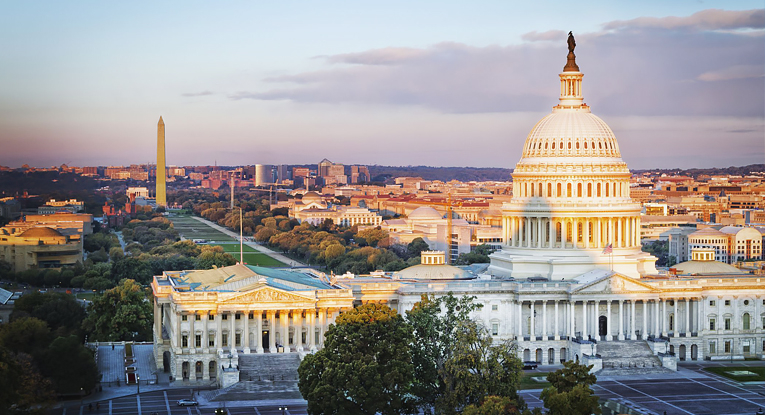For Your Benefit Newsletter, April 2022
HHS Updates and Expands Women’s Preventive Service Guidelines
The Department of Health and Human Services (HHS) announced earlier this year that it adopted recommended changes to the Women’s Preventive Service Guidelines. These Guidelines determine what preventive care needs must be covered by insurers and group health plans—without cost sharing with the patient— under the Affordable Care Act (ACA).
Working under HHS, the Health Resources and Services Administration (HRSA) reviewed the Guidelines with an eye toward “the unique health needs of women across their lifespan.” Preventive care until now has included services such as mammograms, cervical cancer screenings and prenatal care. The updated Guidelines include the following:
- obesity prevention counseling for women ages 40 to 60;
- access to double electric breast pumps and breast milk storage supplies, in addition to the current lactation support services;
- contraceptive care, including counseling services and access to the “full range” of contraceptives, planning practices and sterilization procedures in the FDA’s Birth Control Guide;
- updated risk factors in counseling for sexually transmitted infections;
- screening for HIV to begin at ages 13 to 15; and
- expanded well-woman preventive care to include potentially multiple visits to obtain all necessary services.
These Guidelines, which will affect the coverage of millions of women who have private health insurance regulated by the ACA, are generally effective with respect to plan years beginning in 2023. Therefore, an employer-sponsored plan subject to these requirements which has a plan year that coincides with the calendar year must begin covering these expanded preventive care benefits with no cost-sharing as of Jan. 1, 2023.
State Automatic Enrollment IRA Laws Get Green Light as Supreme Court Refuses to Hear ERISA Preemption Challenge to California’s Auto-Enroll IRA Law
On Feb. 28, 2022, the United States Supreme Court declined to accept an appeal of a lawsuit involving the CalSavers Retirement Savings Program. With that decision, California’s auto-enroll individual retirement account (IRA) law remains in effect, and similar programs enacted in other states and by local governmental entities may also survive challenges based on preemption by the Employee Retirement Income Security Act (ERISA).
CalSavers is California’s mandated auto-enrollment, payroll deduction IRA program that requires private-sector employers that don’t otherwise provide their employees with a retirement plan option to automatically withhold limited contributions from employees’ pay. The salary deferrals are contributed to IRAs managed by the CalSavers Program. An employer’s only involvement is to withhold the contributions from the pay of employees who do not affirmatively opt out.
The Howard Jarvis Taxpayers Association (HJTA) challenged the law on the basis that the law is preempted by ERISA. CalSavers is an opt-out program, as opposed to an “opt-in” or voluntary election. HJTA argued that requiring participants to affirmatively opt out results in the program failing to be “completely voluntary,” causing an ERISA exemption to be unavailable.
The District Court for the Eastern District of California found that the IRA program sponsored by CalSavers does not qualify as an employee benefit plan under ERISA because it is not maintained by an employer. In addition, since it does not impose any reporting, administration or other plan-related burdens on employers, the court found that the program does not “relate to” an employee benefit plan and is therefore exempt from ERISA. On May 6, 2021, the United States Court of Appeals for the Ninth Circuit upheld the district court’s dismissal of the challenge to the law based on ERISA preemption. HJTA petitioned the U.S. Supreme Court for review, and the Supreme Court declined. Therefore, the law remains valid and cannot be challenged again in the Ninth Circuit on the basis of ERISA preemption.
Employers in the 13 states and two cities with variations of mandatory IRA laws who do not otherwise sponsor a retirement plan should determine if compliance with these laws is required. Currently, jurisdictions with these laws include: California, Colorado, Connecticut, Delaware, Illinois, Maryland, Massachusetts, New Jersey, New Mexico, New York, Oregon, Vermont and Virginia. New York City and Seattle established localized auto-enroll IRA programs.
Federal Court Sets Aside Portion of Regulations Affecting Payment of Out-of-Network Claims Under No Surprises Act
A federal district court in Texas has held that a portion of the interim final regulations issued jointly by the United States Departments of Treasury, Labor, and Health and Human Services (the Agencies) pertaining to the arbitration process for air ambulance payment disputes under the No Surprises Act (the Act) must be set aside under the Administrative Procedures Act.
The Act was enacted on Dec. 27, 2020, to protect consumers from large, unexpected medical bills from out-of-network-providers, especially in emergency situations when consumers may not have a choice between providers.[1] The Act specifically addresses air ambulance claims as a particular area of concern – the flights can be expensive, the providers are often out-of-network, and thus individual patients are more likely to be left with a large bill. The Act limits an individual patient’s exposure to surprise air ambulance bills by placing the onus for payment on health insurers and prohibiting air ambulance providers from balance-billing. The Act creates a process for health insurers and air ambulance providers to resolve payment disputes. The final step of the process is independent dispute resolution (IDR), in which each party submits a proposed payment amount and explanation to an arbitrator, and the arbitrator must select one of the two proposed payment amounts by considering statutory factors: the “qualified payment amount” (the median in-network rate for the services) as well as “additional circumstances” (the provider’s training and experience, market share, etc.).
The Act also required the Agencies to promulgate final interim regulations for the IDR process within a year of the legislation’s effective date. The Agencies issued the regulations on Sept. 30, 2021 without providing a notice and comment period. Under the regulations, the arbitrator “must select the offer closest to the qualified payment amount” unless a party submits credible information that the qualified payment amount is materially different from the appropriate out-of-network rate.
In Texas Med. Assoc. v. HHS, 2022 WL 542879 (E.D. Tex. 2022), a medical provider association sued the Agencies under the Administrative Procedure Act, a statute under which courts may set aside agency actions that are not “in accordance with law” and regulations that were issued without satisfying the Administrative Procedure Act’s procedural requirements. The plaintiffs argued that the final interim regulations were unlawful because they conflicted with the Act’s statutory factors for IDR by establishing a rebuttable presumption in favor of one factor (the “qualified payment amount”) at the expense of other factors (the “additional circumstances”). The defendant Agencies argued that the overall statutory scheme of the Act supported the regulations, and that the Agency’s interpretation of the statute was entitled to deference under the Chevron doctrine. Under this doctrine of statutory interpretation, when a statute is ambiguous, courts should defer to the interpretation of the agency (or agencies) charged with administering the statute. The court, however, held that the Act was not ambiguous with respect to the IDR factors. Rather, the plain text of Act required arbitrators to consider both the “qualified payment amount” and the “additional circumstances” without giving one undue weight over another. The court also held that regulations should be set aside because the Agencies impermissibly bypassed the Administrative Procedure Act’s notice-and-comment requirement when issuing the regulations.
Arbitrators in current IDR proceedings now have less clear guidance on how to resolve these disputes, and health plans likely have greater exposure due to the invalidation of the qualifying payment amount presumption.
[1] The Affordable Care Act requires health plans to cover out-of-network emergency services at in-network cost-sharing. However, previous to the No Surprises Act, the Affordable Care Act did not protect individual patients from being billed directly by providers for any amount not paid by insurance. This practice is known as balance billing.


































